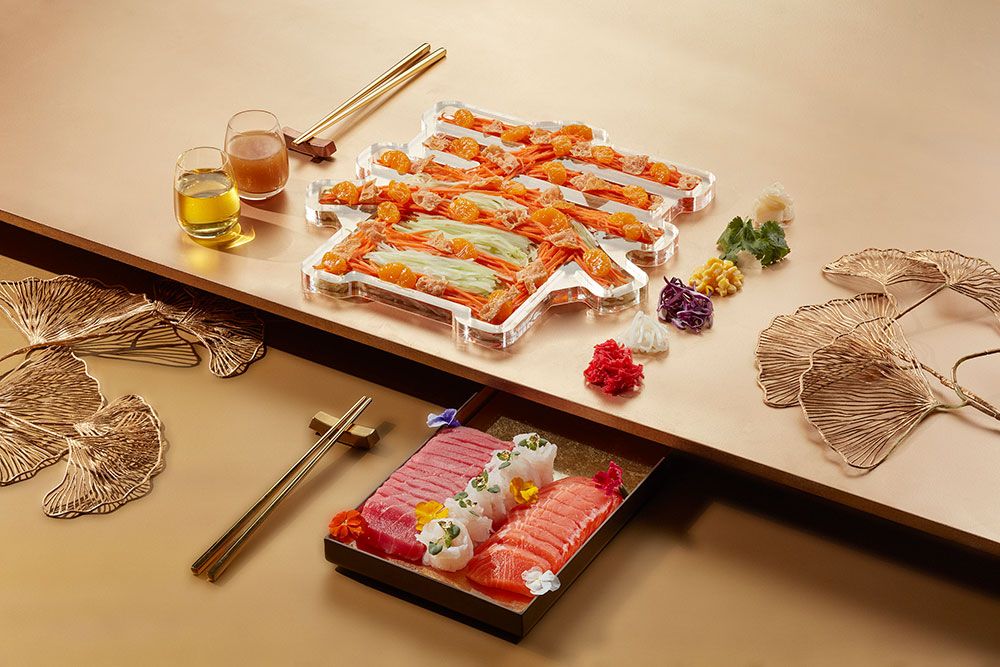Gather the loved ones and toss your way to a prosperous new year with lo hei, a convivial salad dish
Yusheng is a main feature for all Chinese New Year feasts. Also known as lo hei, which translates to ‘tossing upwards’ in Cantonese, this colourful raw fish salad is an emblem of prosperity: auspicious-sounding ingredients are first added, then thrown and mixed from a height to ring in good fortune. Fun as it sounds, the dish is just as delicious—and the significance behind it is equally interesting.
Humble beginnings
You’ll find yusheng commonly enjoyed in present-day households of Singapore and Malaysia, but the dish has its roots in China some 2,000 years back. People started eating raw fish slices during the Zhou dynasty, and the diaspora of the Chinese community—specifically the Cantonese and Teochew—brought this practice to our sunny shores. What was once typically enjoyed during the seventh day of the first lunar month (or ren ri) has since evolved into a mainstay at festive gatherings.
Read more: The most creative yusheng platters to savour

Huat goes into the dish?
There are multiple reasons that make yusheng so well-loved; it is a dish dripping with meaning and significance. The name in itself loosely means ‘growing in abundance’—and each component is added not just for taste and visual appeal, but for its auspicious symbolism. When building yusheng, lucky phrases accompany every addition: for instance, a shower of golden crackers ring in overflowing wealth; and lashings of plum sauce signal sweetness abound.
Common ingredients and their associated phrases include:
● 年年有余 (Nian Nian You Yu): for sliced fish or seafood, which means growing abundance
● 财原广进 (Cai Yuan Guang Jin): for oil, which ushers in wealth
● 大吉大利 (Da Ji Da Li): for pomelo or lime, which brings in good luck
● 鸿运当头 (Hong Yun Dang Tou): for shredded carrots, which welcomes great luck to your life
● 遍地黄金 (Bian Di Huang Jin): for golden crackers, which alludes to gold on the ground, signifying wealth
● 生意兴隆 (Sheng Yi Xing Long): for sesame seeds, to bless your business to flourish
● 招财进宝 (Zhao Cai Jin Bao): for pepper and five-spice packets, to bring forth greater treasures
● 甜甜蜜蜜 (Tian Tian Mi Mi): for plum sauce, to sweeten up relationships between loved ones
After these ingredients have been added, the real fun begins. Armed with chopsticks, everyone gathers (also a sign of harmony) to toss the ingredients; the higher the throw, the greater the luck. Don’t forget to exclaim your wishes and greetings for the new year—after all, yusheng is meant to be a boisterous, celebratory dish to help ring in Year of the Rabbit on a high.
In case you missed it: The best bak kwa to indulge in
